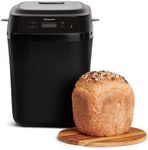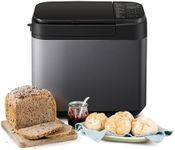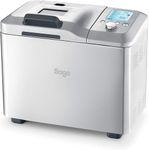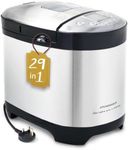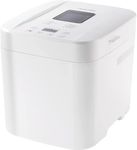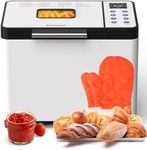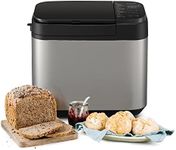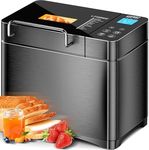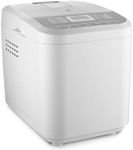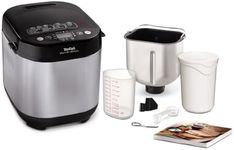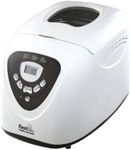Buying Guide for the Best Bread Makers
Choosing the right bread maker can make a big difference in your baking experience. Whether you're a beginner or an experienced baker, understanding the key features and specifications of bread makers will help you find the best fit for your needs. Consider what types of bread you want to make, how often you'll use the machine, and any specific features that might be important to you. Here's a breakdown of the key specs to consider when shopping for a bread maker.Loaf SizeLoaf size refers to the weight of the bread that the machine can produce, typically measured in pounds. This is important because it determines how much bread you can make at one time. Bread makers usually offer options like 1-pound, 1.5-pound, 2-pound, and sometimes even larger sizes. If you have a small household or don't eat a lot of bread, a smaller loaf size might be sufficient. For larger families or those who consume more bread, a machine that can make larger loaves would be more appropriate.
Programs and SettingsPrograms and settings refer to the pre-set options available on the bread maker for different types of bread and baking processes. This is important because it provides versatility and convenience. Common programs include basic white bread, whole wheat, gluten-free, and even options for making dough, jam, or cake. Some machines also offer settings for crust color and loaf size. If you enjoy experimenting with different types of bread, look for a machine with a wide variety of programs. If you prefer simplicity, a machine with fewer, more straightforward settings might be better.
Delay TimerA delay timer allows you to set the bread maker to start baking at a later time. This is important for those who want to wake up to fresh bread or have it ready when they come home from work. Delay timers can usually be set for up to 13-15 hours in advance. If you have a busy schedule and want the convenience of having fresh bread ready at a specific time, a bread maker with a delay timer is a great feature to look for.
Kneading PaddlesKneading paddles are the components that mix and knead the dough inside the bread maker. This is important because the quality and number of paddles can affect the texture and consistency of the bread. Some machines come with a single paddle, while others have dual paddles for more thorough kneading. If you want a more evenly mixed and kneaded dough, consider a machine with dual paddles. Additionally, some paddles are designed to collapse or be removed before baking to minimize the hole left in the bottom of the loaf.
Viewing WindowA viewing window is a transparent section on the lid of the bread maker that allows you to see the bread as it bakes. This is important for monitoring the progress without opening the lid and disrupting the baking process. If you like to keep an eye on your bread as it bakes, a machine with a viewing window can be very useful. However, if you trust the machine to do its job without supervision, this feature might not be as critical.
Keep Warm FunctionThe keep warm function keeps the bread warm after it has finished baking. This is important for maintaining the freshness and warmth of the bread if you are not able to remove it from the machine immediately. Most bread makers can keep the bread warm for up to an hour. If you often find yourself busy and unable to take the bread out right away, a keep warm function can be very convenient.
Gluten-Free SettingA gluten-free setting is a specific program designed to handle gluten-free bread recipes. This is important for those with gluten sensitivities or celiac disease. Gluten-free dough requires different handling and baking times compared to regular dough. If you or someone in your household needs to follow a gluten-free diet, look for a bread maker with a dedicated gluten-free setting to ensure the best results.
